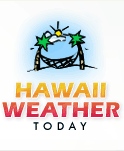Hawaiian Islands weather details & Aloha paragraphs
Posted by GlennMarch 6-7 2008
Air Temperatures – The following maximum temperatures were recorded across the state of Hawaii Thursday:
Lihue, Kauai – 80
Honolulu, Oahu – 84
Kaneohe, Oahu – 79
Kahului, Maui – 81
Hilo, Hawaii – 83
Kailua-Kona, Hawaii – 81
Temperatures ranged between these warmest and coolest spots near sea level at 4 a.m. Thursday morning:
Kaneohe, Oahu – 72F
Kahului, Maui – 57
Precipitation Totals – The following numbers represent the largest precipitation totals (inches) during the last 24 hours on each of the major islands, as of Thursday afternoon:
0.00 KAUAI
0.01 POAMOHO 2, OAHU
0.00 MOLOKAI
0.00 LANAI
0.00 KAHOOLAWE
0.00 MAUI
0.03 KEALAKEKUA, BIG ISLAND
Weather Chart – Here’s the latest (automatically updated) weather map. A high pressure ridge north of Kauai Friday…extends out of a 1029 millibar high pressure cell far to the ENE. Winds will remain light over Kauai, with trade winds on the other islands through Saturday.
Satellite and Radar Images: To view the cloud conditions we have here in Hawaii, please use the following satellite links, starting off with the Infrared Satellite Image of the islands to see all the clouds around the state during the day and night. This next image is one that gives close images of the islands only during the daytime hours, and is referred to as a Close-up visible image. This next image shows a larger view of the Pacific…giving perspective to the wider ranging cloud patterns in the Pacific Ocean…out from the islands. To help you keep track of where any showers may be around the islands, here’s the latest animated radar image.
Hawaii’s Mountains – Here’s a link to the live webcam on the summit of near 14,000 foot Mauna Kea on the Big Island of Hawaii. The tallest peak on the island of Maui is the Haleakala Crater, which is near 10,000 feet in elevation. These two webcams are available during the daylight hours here in the islands…and when there’s a big moon rising just after sunset for an hour or two! Plus, during the nights and early mornings you will be able to see stars, and the sunrise too…depending upon cloud conditions.

The Kona coast on the Big Island of Hawaii
Photo Credit: Flickr.com
Light trade winds filter into the state from the east now. Our trade wind producing ridge of high pressure is located a distance north of Kauai Thursday evening, allowing a drift of air from the east over the state. There will be little change in the direction or strength of these breezes for the time being. There looks to be some changes around the middle of next week, when a fairly meaningful cloud band pushes through the state…opening the flood gates for stronger trade winds then through the rest of the week.
Other than a few showers here and there…conditions will remain very dry well into the future. A few showers will get carried into the windward sides, although they won’t amount to much. The light trade winds won’t inhibit clouds from forming over and around the mountains during the afternoons in most areas. These cumulus buildups may look threatening, becoming pretty dark late in the day…but won’t do much more than that. A frontal passage later next week may bring a change in this dry weather pattern, with wet trade winds thereafter.
It’s Thursday evening as I begin updating this last paragraph of today’s narrative. We’re moving through a late winter weather pattern here in the islands now. The trade winds, albeit on the light side, will grace Hawaii through the remainder of this week. The overlying atmosphere, as it has been for well over a week, remains dry and stable. These ingredients continue to give us favorably inclined weather conditions. I’m sure everyone is happy with this reality, including both the local residents, and our visitors here on vacation. I see little change in this light trade wind pattern going forward, taking us at least through the rest of this week. ~~~ Looking ahead, the trade winds will start next week, and probably end the week as well. The latest computer forecast models are now suggesting that we’ll see some sort of weather action in between though. The winds will likely turn from the trade wind direction later next Tuesday or Wednesday, towards the southeast, and then perhaps all the way around to the south and SW kona directions…ahead of an active Pacific frontal cloud band. This front could bring wet weather to the Aloha state around next Thursday, followed by cool north winds. These northerlies will quickly become trade winds thereafter…with the chance of wet conditions continuing along the windwad sides. The leeward sides will clear out nicely, with sunny weather returning. All of this is really too far into the future to get all worked up over at this point, and may need major revisions between now and then! ~~~ Thursday was a great day here in the islands, with the trade winds keeping the coconut palm fronds swaying to and fro. There was glorious Hawaiian sunshine beaming down, just about everywhere, with just enough puffy cumulus clouds around, to beautify or local skies. It is warm now in the islands, with high temperatures rising into the low 80F’s…with a few of the warmest leeward beaches flirting with 85F degrees! I see no good reason to think that Friday won’t be a more or less carbon copy of today. ~~~ I’ll be back very early Friday morning with your next new weather narrative. I hope you have a great Thursday night until then! Aloha for now…Glenn.
Incredible…try it and see!
Interesting: They may not be gas-guzzlers, but electric cars have a raging thirst for water. A comparison of the volume of coolant water used in the thermoelectric power plants that provide most of our electricity and that used in extracting and refining petroleum suggests that electric vehicles require significantly more water per mile than those powered by gasoline. The findings could bode ill for drought stricken areas in the event of a large scale switch to plug-in vehicles. "I wouldn’t sound the alarm that this is going to ruin the day," says Carey King from the
Interesting2: It finally happened this week. The price of oil passed the all-time inflation-adjusted peak of $103.76 that was set in April 1980—and is now three times what it was just four years ago. What’s going on? This is a record that virtually none of the world’s oil experts predicted, particularly at a time when the world economy is slumping and the demand for gasoline is now dropping in the
Interesting3: Beijing is seeking weather forecasters from home and abroad to provide hourly bulletins in three languages for every event of the Olympics in August,












 Email Glenn James:
Email Glenn James: